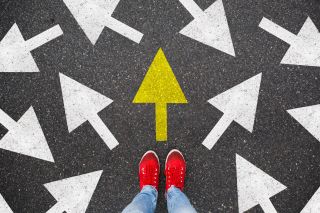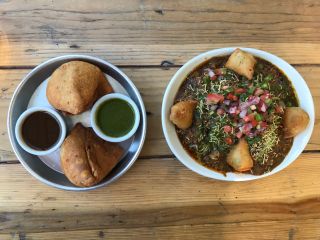Trauma
Cultivating Sense of Self to Cope With Trauma and Life
Eight components of the sense of self.
Updated October 16, 2023 Reviewed by Monica Vilhauer
Part two of a four-part series on trauma and healing. See references for links to all parts.

To have a sense of self is to know oneself and be known by others. A sense of self also comes from what we do and how we relate to our distress. But distress, trauma, and the journey of life can shatter the sense of self. How do we bring ourselves together again?
We become selves by “selfing” with others. We make each other special with our time and attention. As psychiatrist John Bowlby wrote, “there is no such thing as a baby. There is a baby and someone.” Ubuntu proverbs state “people become people through other people,” and “I am because you are.” Martin Luther King, Jr. said “I can never be what I ought to be until you are what you ought to be, and you can never be what you ought to be until I am what I ought to be...This is the inter-related structure of reality.” Folk Buddhist wisdom has it that “relationships are the highest form of spiritual practice,” because they activate our vulnerability, yet can bring such stability and happiness. I have written, “we are who happens to us and what we make of the happening.” I am the person I am because of the “whos” who have happened to me, and what I've done with the happening. George Vaillant, longtime director of the Grant Study said, “happiness is love, full stop!” Love, compassion, mutuality, and shared humanity, of course, are the ingredients that build us. As the saying goes, we might go faster alone, but we go farther together.
Unfortunately, many people have had challenging and even traumatic relational experiences with individuals, groups, or the culture. Many people have difficult inner experiences and mental health difficulties that challenge the cohesiveness of identity and belonging — the “sense of self.”
Many in our culture get hooked on beliefs that challenge relatedness and relatability and take them towards contingent and fleeting sources of self-esteem based on looks, wealth, status, possessions, and achievements. And, unfortunately, quite a few build their identities on antagonism towards or domination of others. Jesus is quoted as asking “what profits a man to gain the world and lose his soul?” Buddha said “better to conquer oneself than conquer a million others.” Our wisdom traditions tell us that those who live to subjugate others are losing something very essential. I think hooking onto this kind of power causes us to lose our sense of self, our sense of others, and our sense of a bigger, inclusive self — the “big-S Self” as spiritual teachers might say. (More on abusive power in part four of this series, and see references for my article on different kinds of power.)
In Internal Family Systems therapy, the self is a calm center able to sit and have a dialogue with the narratives of life and the various parts of personality and identity without being flooded and overtaken by them. As we strengthen the sense of self, we can bounce back from difficult experiences more easily. Relationships are the “outside-in” way we build ourselves; we also need means to build ourselves and grow from the inside out. A stable sense of self-worth comes from valuing our humanity and our relatedness, not being too hung up on what other people might think of us, a deepened sense of presence, and compassion for self and other.
Here are eight foci and practices to build or rebuild sense of self. I think they can really help us deal with trauma.
Bodily sense of self
Our bodies constitute a very grounded and concrete experience of identity and self. When the mind and emotions go in a thousand different and distressing directions, you can cultivate finding yourself in bodily experience. For example, you can send your awareness to the soles of your feet when you’ve been thrown off your game. Exercise and physical activity can also bring you back into your body and grow a sense of vigor and vitality as a physical being. Even physical illness can bring us back uncomfortably into our body, and remind us of the importance of caring for our bodies. “Pendulating,” or moving back and forth between positions of tension and ease within one’s body can also be very helpful.
Experiential sense of self

This is your present-centered inner experience of thoughts, feelings, emotions, moods, and suffering. It’s the most intangible and potentially ungrounded of the six components I’ve outlined here. We can stabilize our inner experience with mindfulness and self-compassion. Adding the “umami” of friendliness and compassion to our inner lives and relatedness makes them both more tasty and delicious. I jokingly refer to the experiential sense of self as my “deconstructed samosa.” (See images here and below.) Looks pretty good, right? But it takes some work, and we’re all works-in-progress.

Relational sense of self
As I opened with, a very large part of our sense of self is composed of who we are to other people. You can ground yourself in service to others. Experiences of caring and being cared about bring us back to ourselves. You can practice sending “loving kindness phrases” to others, even strangers. You can pick your own phrases with the exercise in references, but these are good samples:
May you be filled with loving kindness.
May you be well.
May you be peaceful and at ease.
May you be happy.
Researchers found that directing these types of phrases even to strangers (at a café for example) for a few minutes boosted a subjective sense of well-being.
Narrative sense of self
“What’s your story, morning glory?” What are your journeys in your life of identity, belonging, wellness, and meaning? What are your journeys of love, work, and play? What are your visible and invisible identities? What needs to be affirmed, and what is still hidden, suppressed or oppressed? Where do and don’t you feel belonging, wellness, and meaning? You can practice by picking a value from a list such as this one, and writing about why it’s important, where it has and hasn’t been present, and some ways you could cultivate it in your life right now. Where does cultivation of this value take you on those journeys of identity, belonging, wellness, and meaning?
Cultural sense of self
What is your sense of self and identity in the culture? What is your relationship to humanity? What do you connect to? What alienates you? How do you cultivate connection to some bigger picture outside your individual life?
Geo-self
What is your connection to the Earth? Can you cultivate experiences of grounding yourself to nature, the planet, and other living beings? I’ve also called this sense of self our “Geocortex” or “Eco-ego.” We need that to deal with our climate crisis.
Spiritual sense of self
This one is not necessarily for everyone. It’s certainly about feeling connected to a bigger picture that addresses suffering in all its forms. That might be humanity, or whatever you consider God or some other spiritual and benevolent figure or force.
For extra credit – transcend the self!
Zen Master Dogen said,
“To study the Way is to study the Self. To study the Self is to forget the self. To forget the self is to be enlightened by all things of the universe. To be enlightened by all things of the universe is to cast off the body and mind of the self as well as those of others. Even the traces of enlightenment are wiped out, and life with traceless enlightenment goes on forever and ever.”
Whew, that’s a mouthful! But it's quite a wondrous reckoning and possibility. To let go of the “little-s self” and be “enlightened by all things of the universe” … I guess whoever gets there can write a we-moir, instead of a me-moir!
I hope this brief guide gives you some tools to work with distressing experiences within and between us as human beings. You have my best wishes for your continued growth, health, happiness, and peace!
(c) 2023 Ravi Chandra, M.D., D.F.A.P.A.
References
Four-part series on Trauma and Healing:
Part 1: Dr. Satsuki Ina on Japanese American Trauma and Healing (September 26, 2023)
Part 2: Cultivating Sense of Self to Cope With Trauma and Life (October 3, 2023)
Part 3: Creating Transitional Spaces for Intergenerational Trauma (October 5, 2023))
Part 4: Abusive Power and Megalomania Perpetuate Trauma (October 15, 2023)
For further reading:
Chandra R. Which of Six Power Types Will You Embody and Support? Pacific Heart blog on Psychology Today, September 15, 2022
On understanding oneself and being understood: Chandra R. MOSF 16.4: Film as Metaphor, Myth, Virtual Reality and Stepping Stone from Dismemberment to Belonging. East Wind eZine, August 27, 2021
On self expression: Chandra R. MOSF Vol. 15.5: Queer and Black, Asian and Young; Drama Del Rosario, Tchoupitoulas and Ocean Vuong East Wind eZine, October 5, 2020
For further listening:
The Pacific Heart Podcast. Ep. 28: Long guided meditation for this time of COVID-19 and surfacing wounds of racism. July 16, 2020. On Apple Podcasts and SoundCloud. Dr. Ravi Chandra leads a guided meditation on working with the distress of these troubled times, from the grief and distress of COVID-19, to the surfacing wounds of racism. Working on these with the tools of mindfulness, compassion and relationship.
From Dr. Kristin Neff: Guided lovingkindness meditation
From Dr. Chris Germer: Finding Lovingkindness phrases (PDF) and Guided meditation on finding lovingkindness phrases




